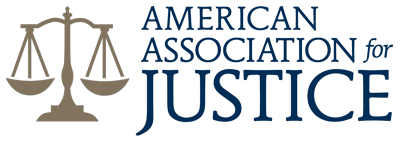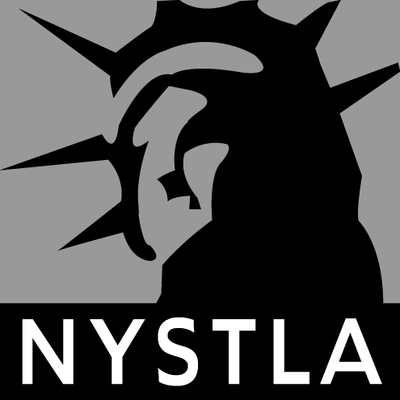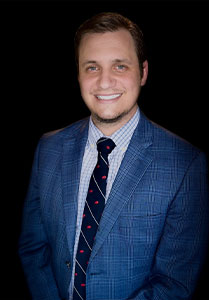Pedestrian accidents in New York and across the state are unfortunately common. With its busy streets and many intersections, New York often sees many cases of pedestrians being hurt in traffic accidents. When these accidents happen, it’s crucial to determine who is responsible for the harm caused. This understanding is not only important for holding the right party accountable but also for helping victims receive fair compensation for their injuries. Different factors can influence who is liable in a pedestrian accident, including the behavior of the driver, the actions of the pedestrian, and even the conditions of the road or sidewalk where the accident happened. At, Andrews, Bernstein & Maranto, PLLC , we are here to guide you through the legal process and help you navigate the complexities of your case.
Driver Responsibility in Pedestrian Accidents
One of the primary reasons for pedestrian accidents is driver negligence. In New York, drivers are expected to follow strict rules to keep the roads safe. When a driver fails to uphold this responsibility and a pedestrian is hurt as a result, the driver is often held responsible. Negligence can take many forms. If a driver is speeding, ignoring traffic signals, or failing to yield to a pedestrian, these actions can put pedestrians in danger and lead to severe accidents. Distracted driving, such as texting while driving or being distracted by a GPS, is also a leading cause of pedestrian accidents.
If a driver is found to be negligent, they can be held liable for the accident. In cases where drivers violate traffic laws, such as running a red light or driving under the influence of alcohol, the responsibility for the accident often rests squarely on them. New York has very clear rules when it comes to the protection of pedestrians, particularly in crosswalks. Drivers are expected to stop and allow pedestrians the right of way, and failure to do so can be grounds for liability. In many cases, proving driver negligence may involve examining traffic camera footage, gathering witness statements, or reviewing any citations the driver received for traffic violations related to the accident.
Pedestrian Responsibility in Accidents
While drivers have a duty to drive safely and watch out for pedestrians, pedestrians also have certain responsibilities when it comes to using New York’s roads and sidewalks. In some cases, the pedestrian’s own actions may have contributed to the accident. For instance, if a pedestrian crosses the street without using a designated crosswalk or suddenly steps into traffic, they may bear partial or even full responsibility for the accident. Jaywalking, or crossing a street outside of a marked crosswalk, is illegal in New York and can increase the risk of an accident. Pedestrians who fail to follow traffic signals, such as crossing against a red light, may also be seen as negligent.
When a pedestrian’s behavior is considered to be careless, their liability in the accident can affect their ability to recover damages. New York follows what is known as comparative negligence. Under this rule, if a pedestrian is partially at fault, the amount of compensation they may be entitled to could be reduced by their share of the fault. For example, if a court determines that a pedestrian was 30% responsible for the accident and the driver was 70% responsible, the pedestrian may only recover 70% of the total damages awarded. This approach encourages all road users to act responsibly and ensures that liability is shared fairly based on each party’s actions.
The team is very personable, patient and empathetic with their clients. They are upfront with you and will explain the entire process with you, they never lead you to believe otherwise, they tell you like it is and will not sell you a million dollar dream. Trust in Andrews, Bernstein & Maranto, PLLC, they work for you and he looks out for your best interest.” - Jane D.
The Role of Comparative Negligence in New York
New York’s comparative negligence law plays a key role in determining liability and compensation in pedestrian accident cases. Under this law, a person can still recover damages even if they are partially at fault for the accident, as long as another party also shares some of the blame. This is an important aspect of New York’s personal injury laws, as it allows pedestrians who may have made a mistake to still seek compensation for their injuries, though the amount may be reduced. Comparative negligence ensures that each party involved in an accident is held accountable according to their level of responsibility.
For example, in a situation where both the pedestrian and driver made mistakes that contributed to the accident, a judge or jury might assess each party’s share of the blame. The pedestrian may be found 40% responsible while the driver is found 60% responsible. In this case, the pedestrian’s compensation would be reduced by their 40% share of the responsibility. This approach aims to be fair by considering the actions of all involved parties.
Other Possible Parties in a Pedestrian Accident
While drivers and pedestrians are usually the main parties involved in a pedestrian accident, other factors and people could also contribute to the situation. In some cases, city agencies or property owners might share some of the blame. For instance, if a poorly designed intersection or a broken traffic light contributed to the accident, the city may be partially responsible for not maintaining safe road conditions. Similarly, if the accident happened on private property or near a business, the property owner could be held liable if a dangerous condition on their property, like a slippery sidewalk or a hidden curb, caused the accident.
There are cases where a vehicle manufacturer could also play a role. If a driver loses control due to a defect in their car, the manufacturer may share liability. Understanding the exact cause of an accident sometimes requires investigating these additional factors, which can make the process of assigning liability more complex. By thoroughly examining all possible causes, a more accurate picture of responsibility can emerge.
Should I Take The First Settlement Offer? Steps to File a Personal Injury ClaimRelated Videos
What to Do If You Are in a Pedestrian Accident
For anyone involved in a pedestrian accident, it’s important to take the right steps to protect their rights and help determine who is liable. First, if possible, call emergency services right away to make sure that injuries are treated and to allow law enforcement to document the accident. An official police report can be a key piece of evidence in a pedestrian accident claim. Even if injuries seem minor, they should be checked by a medical professional, as some issues may not be immediately noticeable but can worsen over time.
Gathering as much information as possible from the scene is also beneficial. This could include taking photographs of the accident scene, noting any traffic signals or signs, and getting contact information from witnesses. This information can be valuable when proving liability in an accident claim. Additionally, any medical records from treatment received after the accident can help show the extent of the injuries and connect them to the accident. Consulting with a legal professional as soon as possible can also help victims understand their rights and options for seeking compensation.
Insurance and Pedestrian Accidents
In New York, insurance plays an essential role in pedestrian accident cases. Since New York is a no-fault insurance state, pedestrians involved in accidents with motor vehicles can often seek compensation for medical bills and lost wages through the driver’s insurance policy, regardless of who was at fault. However, if the injuries are severe and the damages exceed what insurance covers, a personal injury claim may be necessary to fully compensate the pedestrian.
Insurance companies sometimes dispute claims or attempt to reduce the amount they pay, which can make the process challenging for injured pedestrians. It is common for insurance adjusters to look for ways to minimize their liability by investigating whether the pedestrian shares any blame. In situations where liability is shared, an experienced attorney can help defend the pedestrian’s rights and negotiate with the insurance company to seek fair compensation. Knowing the insurance policies that apply and how they interact with New York’s laws can make a significant difference in achieving a favorable outcome in a pedestrian accident claim.
Verdicts & Settlements
The Importance of Legal Guidance in Pedestrian Accident Cases
Navigating the complexities of liability in pedestrian accident cases can be overwhelming, especially when a person is recovering from injuries. In New York, personal injury laws and insurance rules create a unique environment that can be challenging for someone without legal knowledge to fully understand. A legal professional can help assess the details of the accident, determine each party’s level of responsibility, and guide the injured person through the legal process. Having an advocate can provide the peace of mind and support needed to move forward with a claim. A skilled lawyer can assist with gathering evidence, negotiating with insurance companies, and representing the victim in court if needed.
Determining who is liable in a New York pedestrian accident requires a detailed look at the circumstances surrounding the event. Driver negligence, pedestrian actions, and even factors related to road conditions all play a part in assigning responsibility. Each accident is unique, and various elements can impact liability, making it essential to approach each case with a thorough understanding of New York’s legal landscape. Andrews, Bernstein & Maranto, PLLC, is dedicated to helping victims of pedestrian accidents understand their rights and pursue the compensation they deserve. If you or a loved one has been injured in a pedestrian accident, reach out to our team to discuss your case and learn how we can assist you.














